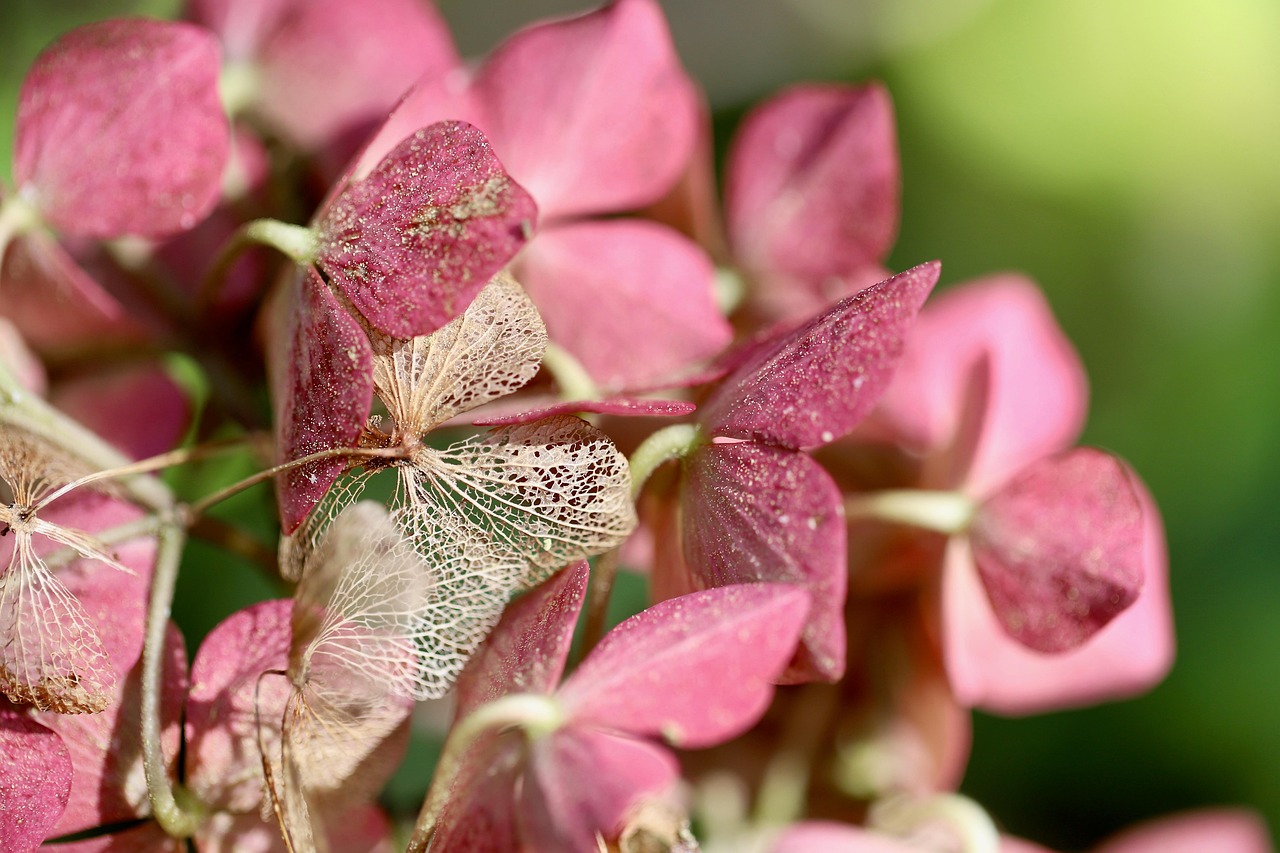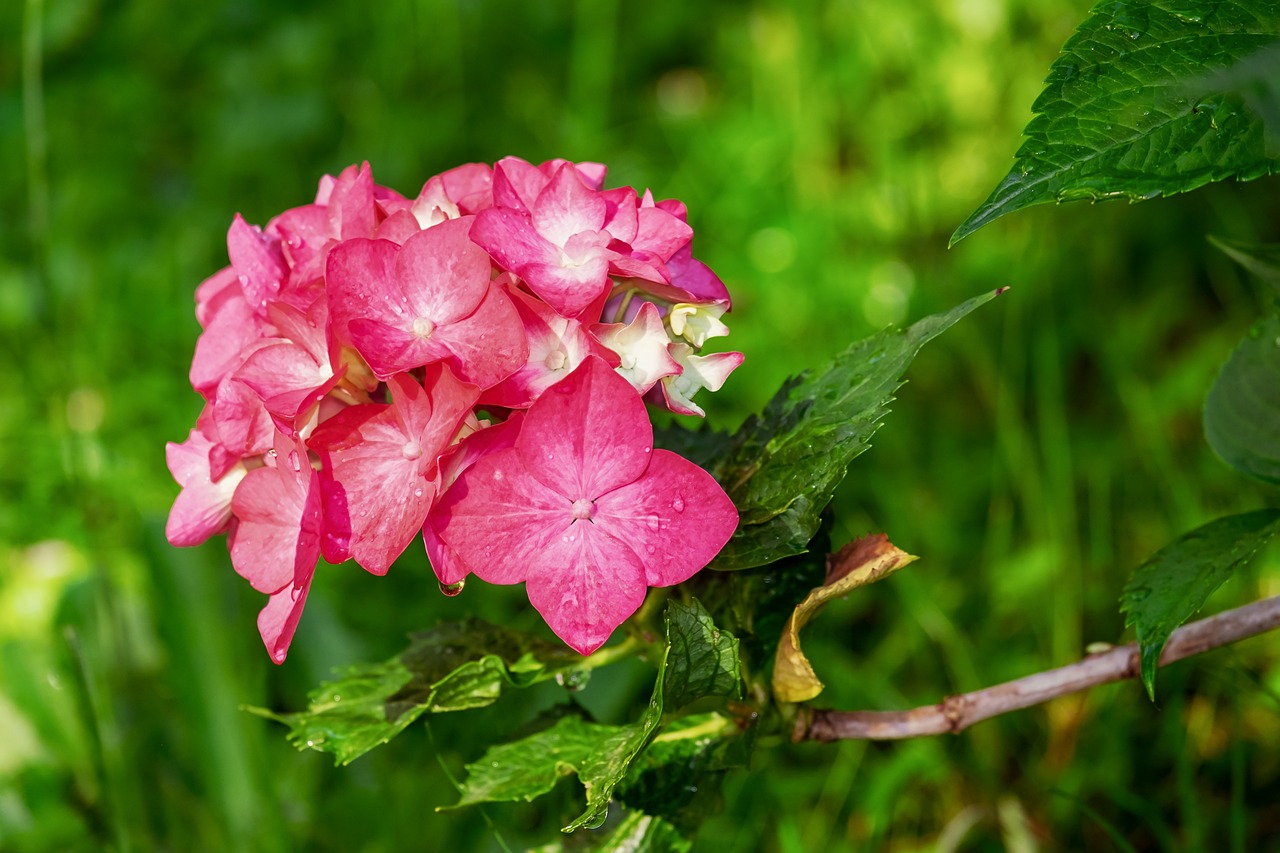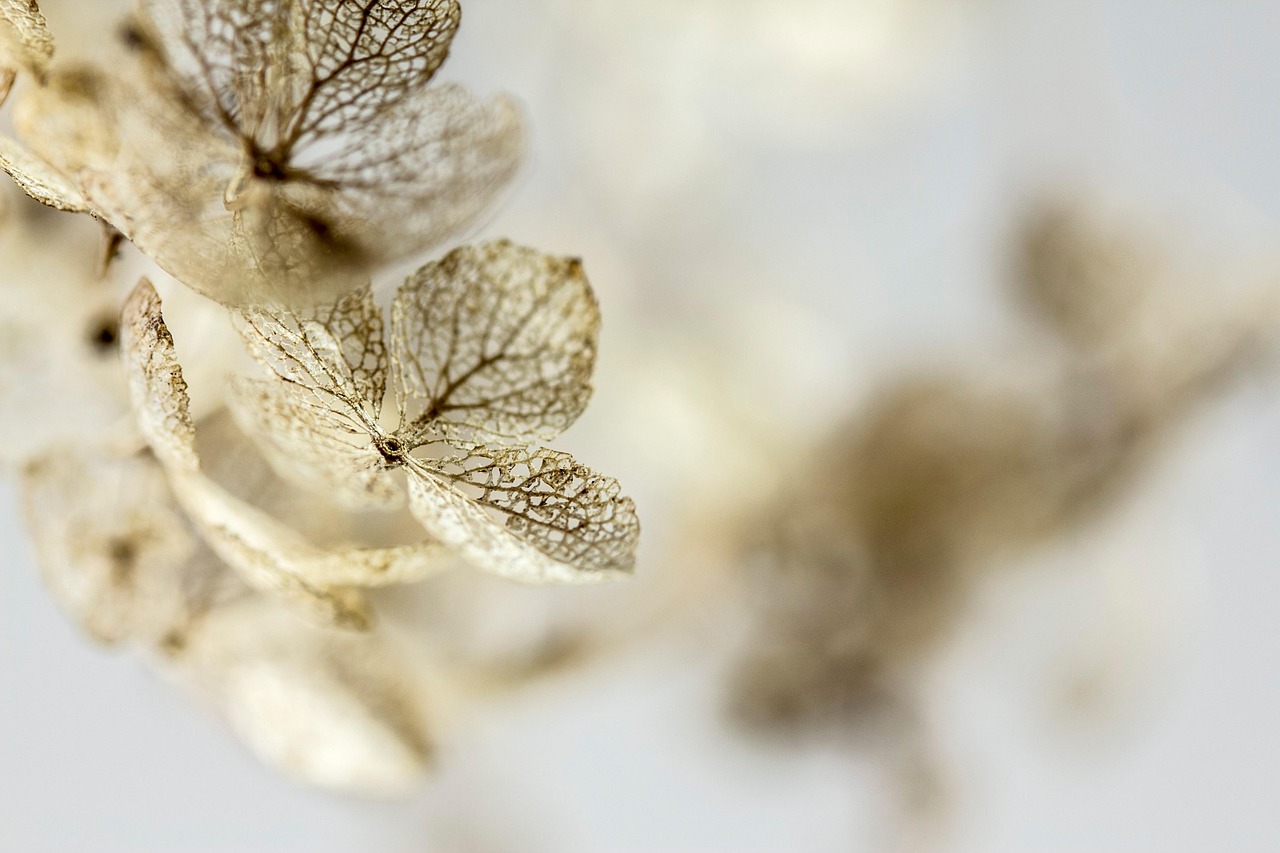To prune Quick Fire Hydrangeas for optimal blooming, trim them in late winter or early spring before new growth begins. Remove dead or damaged branches, and shape the tree by cutting back about one-third of the previous year’s growth. This encourages healthy blooms and maintains a desirable shape.
Quick Fire Hydrangeas are a popular choice among gardeners due to their stunning blooms and adaptability. These hardy deciduous shrubs can reach the size of small trees, making them perfect for landscapes that need height and color. With their ability to produce flowers from summer to fall, proper pruning is essential for maximizing their beauty and health.

Understanding the right time and technique for pruning Quick Fire Hydrangeas can significantly impact their blooming performance. Pruning at the correct time stimulates new growth, while improper cuts can lead to reduced flowering. These plants typically bloom on new wood, meaning they produce flowers on the current season’s growth. This characteristic sets them apart from many other hydrangea varieties that bloom on old wood.
Pruning Basics
Before diving into specifics, it is helpful to grasp some fundamental pruning concepts. Pruning not only shapes the plant but also promotes better air circulation and sunlight penetration, which are crucial for healthy plant growth. Here are some essential considerations:
- Tools: Use clean, sharp pruning shears to make precise cuts. For larger branches, consider loppers or a pruning saw.
- Timing: The best time to prune Quick Fire Hydrangeas is late winter to early spring, just before new growth starts.
- Technique: Make cuts at a 45-degree angle, about 1/4 inch above a bud or node.
When planning your pruning strategy, it’s important to assess the overall health of your Quick Fire Hydrangea. If the plant appears healthy and thriving, light pruning may suffice. However, if it has become overgrown or is showing signs of disease, more extensive pruning may be necessary.

Step-by-Step Pruning Guide
Follow these steps for effective pruning of your Quick Fire Hydrangea:
- Inspect the Plant: Look for dead or damaged branches. These should be removed first.
- Remove Old Blooms: Cut back spent flowers from the previous year to encourage new growth.
- Shape the Tree: To maintain a pleasing shape, trim back about one-third of the previous year’s growth. Focus on branches that are too long or out of place.
- Thin Out Crowded Areas: If branches are crossing or densely packed, thin them out to improve air circulation.
After completing your pruning, it’s beneficial to clean up any debris around the base of the plant. This helps prevent potential pest problems and diseases that could hinder your hydrangea’s growth.
Common Mistakes to Avoid
Pruning can be intimidating, especially for those new to gardening. Here are some common mistakes to watch out for:

| Mistake | Description |
|---|---|
| Pruning at the Wrong Time | Cutting back too late in the spring can remove potential blooms. |
| Over-Pruning | Taking off too much growth can weaken the plant and reduce flowering. |
| Ignoring Dead or Damaged Wood | Failing to remove unhealthy branches can lead to disease spread. |
By avoiding these common pitfalls, gardeners can ensure that their Quick Fire Hydrangeas remain healthy and vibrant year after year. Each pruning session not only benefits the current season’s blooms but also sets the stage for future growth and flowering.
Additional Care Post-Pruning
Once pruning is complete, focus on providing the right care for your Quick Fire Hydrangeas. Adequate watering and fertilization play significant roles in their overall health. Here are some tips:
- Watering: Ensure the plant receives sufficient moisture, especially during dry spells.
- Fertilization: Use a balanced fertilizer in early spring to support new growth.
- Mulching: Apply mulch around the base to retain moisture and suppress weeds.
Caring for Quick Fire Hydrangeas after pruning will enhance their ability to flourish and produce beautiful blooms throughout the growing season. As you develop your gardening skills, remember that patience and observation are key components in nurturing these lovely plants.

Understanding the Growth Cycle of Quick Fire Hydrangeas
To effectively care for and prune Quick Fire Hydrangeas, it is essential to understand their growth cycle. This knowledge helps gardeners anticipate when to prune and how to support the plant’s natural growth patterns. Quick Fire Hydrangeas typically follow a seasonal rhythm that influences their blooming behavior and overall health.
Spring: Awakening and Growth
As temperatures rise in spring, Quick Fire Hydrangeas emerge from dormancy. During this time, new shoots begin to develop from the base of the plant as well as from older wood. Proper pruning just before this phase encourages robust growth. Here are some signs of growth in spring:
- New Leaves: Fresh green leaves appear, signaling the start of the growth season.
- Bud Formation: Flower buds begin to form on the new wood, setting the stage for blooms later in the season.
- Increased Activity: The plant shows increased water and nutrient uptake, which is crucial for healthy development.
Summer: Blooming Season
Quick Fire Hydrangeas are known for their spectacular summer blooms. As summer progresses, the flowers transition from creamy white to a lovely pinkish hue. This phase is vital for the overall health of the plant. Here are some tips for maintaining your hydrangeas during the blooming season:
- Regular Watering: Ensure consistent moisture levels, especially during hot weather.
- Deadheading: Remove spent blooms to encourage further flowering and maintain a tidy appearance.
- Pest Monitoring: Keep an eye out for common pests such as aphids or spider mites, and take appropriate action if needed.
Fall: Preparing for Dormancy
As fall approaches, Quick Fire Hydrangeas begin to prepare for winter dormancy. The leaves may change color and eventually drop off. This is a critical time for ensuring that the plant is ready to withstand colder temperatures. Consider the following:
- Mulching: Apply a thick layer of mulch around the base to insulate the roots and retain moisture.
- Watering Before Frost: Give your hydrangeas a good soak before the first frost hits to help them survive winter.
- Avoid Late Pruning: Refrain from pruning in late fall, as this can stimulate new growth that may be damaged by frost.
Pest and Disease Management
Maintaining healthy Quick Fire Hydrangeas also involves being vigilant about pests and diseases. Early detection and management can prevent more severe problems down the line. Here are some common issues to watch for:
| Pest/Disease | Symptoms | Treatment |
|---|---|---|
| Aphids | Shriveled leaves, sticky residue (honeydew) | Insecticidal soap or neem oil |
| Powdery Mildew | White, powdery spots on leaves | Fungicide treatment; improve air circulation |
| Leaf Spot | Browning or yellowing spots on leaves | Remove affected leaves; fungicide if severe |
Understanding these common pests and diseases will allow you to take proactive measures to protect your plants. Regularly inspecting your hydrangeas will help catch issues early, ensuring that they remain healthy and vibrant.
Enhancing Bloom Quality with Fertilization
A well-balanced fertilization schedule can significantly enhance the quality of blooms on your Quick Fire Hydrangeas. These plants thrive on nutrients that support their growth and flowering. Here are some key points about fertilization:
Choosing the Right Fertilizer
Select a fertilizer that is specifically formulated for flowering shrubs. A balanced fertilizer with equal parts nitrogen, phosphorus, and potassium (N-P-K) is ideal. Look for a product with an N-P-K ratio such as 10-10-10 or 20-20-20. Here are some tips on how to apply fertilizer:
- Timing: Apply fertilizer in early spring just as new growth begins.
- Application Method: Follow package instructions for proper dosage and application method.
- Avoid Over-Fertilizing: Too much fertilizer can lead to excessive foliage growth at the expense of blooms.
Organic Options
If you prefer organic gardening methods, consider using compost or well-rotted manure as a natural fertilizer. These organic materials improve soil structure while providing essential nutrients. Apply a layer of compost around the base of your hydrangeas in early spring.
Fertilizing your Quick Fire Hydrangeas appropriately throughout their growing season will not only promote vibrant blooms but also ensure that they remain robust and healthy year after year. Remember that each plant is unique, so observing their responses to fertilization will help you tailor your approach for optimal results.
Watering Practices for Quick Fire Hydrangeas
Proper watering is crucial for maintaining the health and vibrancy of Quick Fire Hydrangeas. These plants thrive in moist, well-drained soil, making it essential to understand their specific watering needs throughout the growing season. Knowing when and how to water will contribute significantly to their blooming success.
Understanding Soil Moisture Needs
Quick Fire Hydrangeas prefer consistently moist soil, especially during dry periods. However, they are also susceptible to root rot if overwatered. Here are some tips to help you monitor soil moisture:
- Soil Check: Stick your finger about 2 inches into the soil. If it feels dry at that depth, it’s time to water.
- Drainage: Ensure that the planting site has good drainage to prevent water from pooling around the roots.
- Watering Frequency: During the peak summer heat, you may need to water every few days. In cooler months, reduce frequency.
Watering Techniques
Different watering methods can be employed to ensure your Quick Fire Hydrangeas receive adequate moisture. Here are some effective techniques:
- Deep Watering: Water thoroughly at the base of the plant rather than shallowly. This encourages deep root growth.
- Drip Irrigation: Consider using a drip irrigation system for consistent moisture delivery without wetting the foliage excessively.
- Soaker Hoses: These can be laid out around the base of the hydrangea to provide gentle and even watering.
Mulching for Moisture Retention
Mulching is an excellent practice that benefits Quick Fire Hydrangeas in several ways. Not only does it help retain soil moisture, but it also suppresses weeds and regulates soil temperature. Here are some key points regarding mulch:
Selecting the Right Mulch
When choosing mulch for your hydrangeas, consider the following options:
- Bark Mulch: Provides excellent moisture retention and breaks down slowly, enriching the soil over time.
- Wood Chips: Similar benefits to bark mulch, these also add aesthetic appeal to your garden.
- Straw or Hay: These organic materials break down quickly, so they may require more frequent replacement but are great for quick moisture retention.
Applying Mulch
To apply mulch effectively, follow these steps:
- Preparation: Clear any weeds or debris from around the base of the hydrangea.
- Layering: Apply a 2-4 inch layer of mulch, ensuring it is spread evenly around the plant but not touching the stem directly.
- Maintenance: Replenish mulch as needed, especially after heavy rains or winds that may displace it.
Winter Care for Quick Fire Hydrangeas
Preparing your Quick Fire Hydrangeas for winter is essential to ensure they survive the colder months and thrive in spring. While they are hardy plants, taking extra precautions can make a significant difference in their health.
Protecting Roots from Freezing Temperatures
The roots of Quick Fire Hydrangeas need protection from freezing temperatures. Here are some effective strategies:
- Mulching Again: As winter approaches, adding an extra layer of mulch can help insulate the roots from cold.
- Wrap with Burlap: For younger plants or those in particularly harsh climates, wrapping them with burlap can provide additional protection.
- Avoid Heavy Snow Accumulation: If snow accumulates heavily on branches, gently shake it off to prevent breakage.
Cautious Pruning in Late Winter
If necessary, light pruning can be done in late winter before new growth starts. However, avoid cutting back too much, as this can hinder flowering in spring. Focus on removing dead or damaged wood only.
Common Varietal Considerations
While Quick Fire Hydrangeas share many similarities, there are specific varietals that exhibit unique characteristics. Understanding these differences can aid in care and maintenance decisions.
| Variety | Description | Bloom Color |
|---|---|---|
| Quick Fire | A fast-growing variety known for its upright habit. | Creamy white transitioning to deep pink. |
| Quick Fire Fab | A compact version ideal for smaller gardens. | Pale pink to dark pink. |
| Quick Fire White | A variation with pure white blooms that stay white longer. | Pure white turning blush pink in fall. |
Caring for different varieties may require slight adjustments in watering and fertilization schedules. Always consider the specific needs of each cultivar to ensure optimal health and blooming potential.
The knowledge of watering practices, mulching techniques, winter care strategies, and varietal considerations will greatly enhance your ability to cultivate beautiful Quick Fire Hydrangeas. By being attentive to their needs throughout the seasons, you are likely to enjoy vibrant blooms and healthy plants year after year.
In addition to the basic care practices outlined, there are several advanced techniques that can further enhance the growth and blooming of Quick Fire Hydrangeas. These methods can help you achieve a more vibrant and lush display in your garden.
Advanced Pruning Techniques
For those who want to take their hydrangea care to the next level, advanced pruning techniques can be quite beneficial. These methods require a bit more knowledge but can yield impressive results.
Selective Thinning
Instead of simply cutting back branches, selective thinning involves removing entire branches from the base to improve airflow and light penetration. This technique helps to:
- Encourage New Growth: By allowing more light to reach the inner branches, you can stimulate new shoots.
- Reduce Disease Risk: Improved airflow minimizes the risk of fungal diseases.
Shaping for Aesthetic Appeal
Shaping your Quick Fire Hydrangeas not only promotes health but also enhances their visual appeal. Consider these shaping tips:
- Upright Form: For a more formal look, prune to encourage an upright growth habit.
- Bowl Shape: A rounded shape can create a softer appearance and better showcase blooms.
Utilizing Companion Planting
Companion planting can also benefit Quick Fire Hydrangeas by improving growth conditions and deterring pests. Here are some plants that pair well:
- Daylilies: Their vibrant flowers complement hydrangeas and help attract pollinators.
- Ferns: These add texture and work well in shaded areas where hydrangeas thrive.
- Hostas: Their large leaves provide a nice contrast to the hydrangea blooms while thriving in similar conditions.
Monitoring Plant Health
Regular monitoring of your Quick Fire Hydrangeas will help you catch any issues before they escalate. Pay attention to:
- Leaf Color: Ensure leaves remain vibrant green. Yellowing may indicate nutrient deficiencies or overwatering.
- Growth Patterns: Stunted growth could suggest issues with soil quality or potential pests.
- Pest Activity: Regularly check for pests on leaves and stems. Early intervention is key to maintaining plant health.
Caring for Quick Fire Hydrangeas in Different Climates
The care of Quick Fire Hydrangeas may vary depending on your climate zone. Here are some considerations based on different environmental conditions:
Cooler Climates
In cooler regions, it is essential to provide additional winter protection. Consider the following:
- Wrap Plants: Use burlap or protective coverings to shield from harsh winds and frost.
- Choose Hardy Varieties: Opt for cultivars known for their resilience in cold weather.
Warmer Climates
If you live in a warmer climate, be mindful of watering practices to avoid drought stress:
- Morning Watering: Water early in the morning to minimize evaporation.
- Shade Considerations: Provide afternoon shade during peak summer heat to protect blooms.
Final Thoughts
Caring for Quick Fire Hydrangeas involves understanding their specific needs regarding pruning, watering, fertilization, and pest management. By following the guidelines provided in this article, you can cultivate healthy plants that yield vibrant blooms year after year. Remember that patience and observation are key components of successful gardening.
The beauty of Quick Fire Hydrangeas lies not only in their stunning flowers but also in their adaptability and resilience. With proper care, these plants can become a stunning focal point in any garden landscape. Whether you are a novice gardener or an experienced horticulturist, implementing the recommended practices will enhance your experience and results.
Ultimately, each hydrangea is unique, and understanding its individual characteristics will guide you toward making informed decisions. Enjoy the process of nurturing your Quick Fire Hydrangeas, and relish the joy they bring to your outdoor space with their spectacular blooms.
